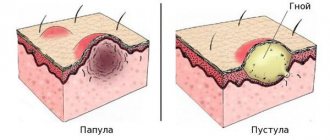False croup is an acute inflammatory process localized in the larynx. Accompanied by swelling of the subglottic area. This condition leads to obstruction. Inflammation can lead to narrowing of the area under the vocal cords, resulting in noisy and difficult breathing. A common cause is a viral infection. It differs from laryngitis by stenosis of the larynx.
This disease is most common in children aged 3 months to 5 years. As the child grows older, this condition ceases to be life-threatening, because the trachea becomes larger and breathing problems, as a rule, do not arise. Croup can occur at any time of the year, but is more common during the fall and winter months.
Causes of the disease
The etiology is usually viral - parainfluenza viruses, especially type I, cause the disease in 75% of cases. Relatively common causes of false croup in children are respiratory syncytial virus, adenovirus and human coronavirus. The infection is usually spread by inhaling contaminated air, or by contact with objects that an infected person has come into contact with.
Influenza is a relatively rare cause that requires longer hospitalization and has an increased risk of another attack. Rhinovirus, enterovirus, and herpes simplex are sporadic causes of mild croup.
It is also possible to develop against the background of bacterial infection with mycoplasma, streptococcus, chlamydia, Staphylococcus aureus, etc. Diphtheria was the most common form of fatal stenosing laryngitis in another era, but now this disease is practically absent thanks to vaccination of the population.
1.General information
The term “croup” (as, indeed, many other medical terms) is not always used in its exact and correct meaning. Translated from the Scottish dialect, it means “caw”, “caw”, and in a medical context - an inflammatory syndrome due to infectious lesions of the larynx, which, due to its stenosis (narrowing, usually like a “sharpened pencil”), is accompanied by characteristic changes in breathing and voice . In general, croup has many forms and synonymous definitions: stenosing laryngitis, acute obstructive laryngitis (or laryngotracheitis, depending on the involvement of the trachea in the process), subglottic laryngitis (involvement of the so-called vocal fold on the mucous membrane of the larynx is emphasized), simply laryngeal stenosis , and etc.
True croup is traditionally called laryngitis (inflammation of the larynx) affecting the vocal cords and related functions, if these inflammations are caused by diphtheria (more precisely, fibrinous “films” that form and peel off during diphtheria). Sometimes true croup also includes inflammation caused by the entry of a foreign body into the larynx.
False croup, i.e. laryngitis and laryngotracheitis not associated with diphtheria, is much more common at the present stage, although it would be fairer to say differently: thanks to compulsory vaccination, diphtheria as a cause of croup has practically disappeared.
False croup is detected almost exclusively in children (aged from six months to six years), since their larynx is smaller and its lumen is narrow, its shape is funnel-shaped, the surrounding structures are not formed and are not rigid enough - thus, the possibility and probability of stenosing tissue edema is much higher . According to some data, false croup develops in at least every third childhood respiratory infection. Boys and girls get sick in approximately equal statistical proportions, and almost the entire volume of registered cases occurs in the cold season.
A must read! Help with treatment and hospitalization!
Symptoms of false croup
The illness may begin as a cold, with a stuffy nose or rhinitis and fever. As the airways swell, the following symptoms may occur:
- barking cough that gets worse at night;
- noisy, rapid breathing;
- hoarseness or hoarseness of voice;
- inspiratory type of shortness of breath;
- excessive worry.
Symptoms of false croup in children appear 2-3 days after the onset of ARI (acute respiratory infection). As a rule, enlargement of the cervical lymph nodes (lymphadenitis) occurs.
In the acute viral form, the onset of symptoms is usually gradual, starting with rhinorrhea, mild cough and fever. Progresses over 12-48 hours, typical symptoms appear, dysphonia, kennel cough. Stridor (wheezing, noisy breathing) initially occurs only with excitement or crying, but with increasing severity it also appears at rest.
The clinical course is usually variable, with remission ranging from 2 to 7 days, although cough may persist longer. Unlike laryngotracheitis, false croup always occurs at night - the onset and cessation of symptoms are abrupt. There is usually no fever. Episodes may be repeated over two nights.
Alveolar gas exchange is normal, and hypoxia will only occur when almost complete obstruction occurs. Excessive pallor, cyanosis and deterioration in general health require immediate medical attention.
Stages of disease development
The development of an attack of false croup directly correlates with the prevalence of edema: first it narrows the lumen of the larynx, then it affects the vocal cords, then it affects other body systems (nervous, cardiovascular) that suffer from a lack of oxygen.
- The onset of an attack of false croup indicates a disturbance in the breathing process only during physical exertion or severe anxiety. Reflexively trying to compensate for hypoxia in the body, a person changes the depth and rhythm of breathing: his inhalation becomes longer, and his exhalation becomes shorter, with strong wheezing and whistling.
- At the second stage, suffocation begins when the person is completely at rest. If you examine his diaphragm during the breathing process, you will notice that the space between the ribs and the jugular cavity are drawn inward during inhalation. Due to the lack of oxygen, the heart begins to work faster, so by feeling the pulse, the patient can detect tachycardia. The skin around the mouth brightens and then takes on a blue tint.
- At the third stage, the difficulty in breathing worsens even more; during inhalation, the area under the diaphragm (epigastric zone) is strongly retracted, resulting in a barking cough. Due to swelling of the larynx, the patient develops dysphonia, which is why he can only speak in a whisper. Hypoxia of the body leads to damage to the central nervous system, as a result of which an attack of strong emotional arousal is replaced by sudden lethargy and drowsiness.
- During the fourth stage of false croup, wheezing when exhaling and barking cough completely disappear. Breathing becomes weak and shallow, blood pressure and pulse drop, confusion gradually gives way to coma. If a person is not brought out of a coma with the help of urgently taken medical measures, the likelihood of death is very high.
The sooner a person receives adequate medical care, the lower the risk of developing severe hypoxia and associated adverse consequences.
Diagnosis of false croup
Typically, the diagnosis is clinical and no further testing is required. Rapid assessment of general well-being, vital signs, and mental status should be performed to identify children with severe respiratory distress and respiratory failure. Diagnosis should be carried out in a calm environment.
The severity of the disease is determined by the presence of stridor at rest, chest wall retraction, the presence or absence of pallor or cyanosis, and mental stability.
Additional diagnostic methods:
- Pulse oximetry is of limited usefulness because the pulse may be normal even in the presence of significant airway obstruction. It is recommended to monitor the pulse in severe conditions.
- Radiological evaluation is usually not required. X-rays of the neck may show the typical progressive and symmetrical narrowing of the trachea in subglottic stenosis. Prescribed for doubtful diagnosis, atypical course, suspected presence of a foreign body.
Performing nasopharyngeal aspiration to look for a possible infectious etiology may be useful in hospitalized patients and to control infection. A differential diagnosis should be established, first of all, for spasmodic laryngitis, epiglottitis and bacterial tracheitis and other causes of acute obstruction. Foreign body aspiration may present abruptly but should also be excluded in children who do not respond to treatment or have a prolonged recovery.
The presence of chronic symptoms, persistent or recurring, as well as the absence of catarrhal signs or fever should raise suspicion of congenital anomalies of the respiratory tract (laryngomalacia, vocal cord paralysis, subglottic stenosis, subglottic hemangioma, etc.).
A retropharyngeal or periamillal abscess may be mistaken for false croup. In this case, a CT scan (computed tomography) is prescribed, which makes it possible to determine the exact cause. Dysphagia and excessive salivation may indicate epiglottitis, a foreign body in the airway or esophagus. Allergic angioedema can also mimic the disease, although it usually occurs in association with other anaphylactic manifestations.
Treatment of false croup
If a respiratory pattern develops, parents should consult a pediatrician or otolaryngologist as soon as possible. Corticoids are the most effective drugs. A single dose of oral dexamethasone is effective in all cases, regardless of disease severity. Doctors are faced with the task of reassuring the child and parents. To improve the patient's well-being, painkillers and antihistamines are prescribed.
Inhalation with a nebulizer and fresh air help reduce dry mucous membranes, which improves well-being. If there is respiratory distress and O2 saturation is less than 94%, then supplemental oxygen therapy is needed.
Treatment includes the use of the following medications:
- Corticoids. They reduce swelling and have an anti-inflammatory effect, and also relieve the intensity of symptoms. There are no side effects with short-term use. Corticosteroids eliminate the need for epinephrine and intubation.
- Adrenalin. Also proven to be effective, especially in moderate to severe cases. Reduces the need for intubation. The effect occurs within 10 minutes.
Children with mild croup can be treated at home. The patient should be in a comfortable position, drink a lot and stay in bed, as fatigue and crying aggravate the disease. Home humidifiers (such as cool mist vaporizers) reduce dryness in the upper respiratory tract and make breathing easier. Recovery usually occurs within 3-4 days.
First aid for false croup in children includes taking measures aimed at opening the airways. To do this, you need to provide a flow of fresh air or take the child outside. Steam inhalations have a good effect.
Children with increasing or continuing respiratory distress, tachycardia, fatigue, dehydration, or bluish discoloration of the skin are hospitalized. Oxygen treatment is prescribed. If the patient feels better, he or she can be discharged home.
The use of antibiotics is limited to rare cases in which the child also develops a bacterial infection. The viral nature of the disease requires the prescription of antiviral drugs.
USING COOKIES
Our website uses cookies. Below you can find out more about how we work with them and how they can be controlled.
When you visit this website, you consent to the use of cookies in accordance with this cookie notice. If you do not agree to these terms, please disable cookies by following the instructions in this cookie notice to prevent cookies from being stored on your device by this website.
What are cookies?
Cookies are small text files that are sent to your device when you visit a website. The cookies are then returned to the original website on each subsequent visit, or to another website that recognizes the cookies. Cookies act as memory for a website, allowing the website to recognize your device when you visit it. Cookies can also remember your preferences, improve your user experience, and tailor the advertising you see to suit your needs.
You can find more information about downloaded cookies, including how to set cookies on your device, as well as how to manage and delete them, at: www.aboutcookies.org
Types of cookies:
Sessional and permanent
We may use session cookies: these only last until you close your browser. But we also use persistent cookies, which are stored for a longer, specified period of time.
Third Party Cookies
Our website may allow providers to load third party cookies on the services we offer. These files are not under our control. For more information about how a third party provider uses cookies, please visit the website of the relevant third party provider. Detailed information about the third-party cookies running on this website, including their purpose, is provided in the table below.
Cookies used on this website
Below is a brief description of the cookies that work on this website. You should check other AstraZeneca websites as their use of cookies may vary.
Necessary cookies
These files are essential to the basic operation of the website, supporting important functionality such as shopping carts, and the technical operation of the website to ensure its proper functioning.
Website visit cookies
These files allow the website to remember your choices (for example, language or region) and provide other, more comprehensive user adaptation capabilities. Typically, these types of cookies do not collect personal data.
Cookies by service level
These cookies are used to operate the website and include customer surveys, recording visitor numbers and other web analytics. They may also collect limited personal data.
Marketing, anonymous, tracking, cross-site cookies
These cookies are used to track our visitors through our websites. They collect information about how visitors use a website, such as which pages they look at most often and whether they receive web page error messages. These cookies may be used to track individual visitors through our websites: for example, by storing a unique visitor ID so that the visitor can be identified by the websites.
Cookies for marketing, targeted advertising
These files are used to track browsing habits and activities. We use this information to be able to show you targeted/personalized marketing materials. With these types of cookies, we may collect personal data and use it to show targeted content.
How to control and delete cookies
Most web browsers accept cookies, but you can change your browser settings to refuse new cookies, disable existing ones, or simply notify you when new cookies are sent to your device.
To set up your browser and refuse cookies, please read its instructions (usually located in the “Help”, “Tools” or “Edit” menu). More detailed guidance can be found at www.aboutcookies.org
Please note that if you refuse or disable cookies, some functionality of the website may be lost. Additionally, disabling cookies or a category of cookies does not remove cookies from your browser. You will need to do this yourself.
Changes to how our cookies work
Notice of any changes to the operation of cookies for this website will be posted here and, if necessary, identified on our web pages highlighting any changes.
Contact Information
If you have any questions regarding cookies, please contact us at
Prevention
There is no medicine to prevent laryngeal stenosis. It is useless to give a child immunomodulatory drugs. Even those children who are in good health are not immune from false croup.
To prevent illness it is recommended:
1. Ventilate the apartment more often.
2. Provide daily wet cleaning.
3. Dress your child according to the season.
4. Walk outdoors every day.
5. Limit allergenic foods when you have a cold.
Advantages of treating false croup at the RebenOK clinic
When the first signs of illness appear, contact a pediatrician or ENT specialist at the medical center. We employ competent specialists with extensive practical experience. Self-medication is unacceptable, as there is a risk to health and life.
We offer you to use the service of calling a doctor at home. A specialist will arrive at the address specified in the application, conduct diagnostics, provide first aid and tell you how to treat the disease. If necessary, the patient will be invited to the clinic. You can also consult with a specialist online.









